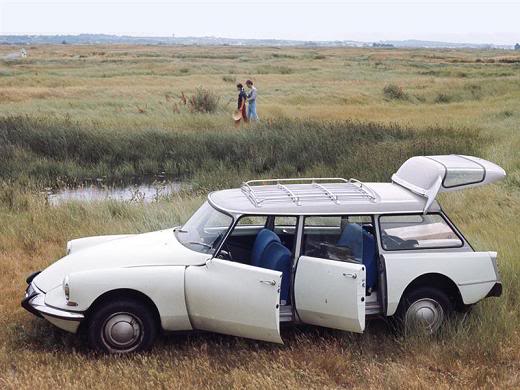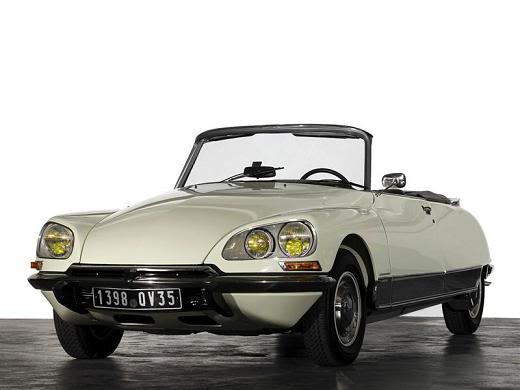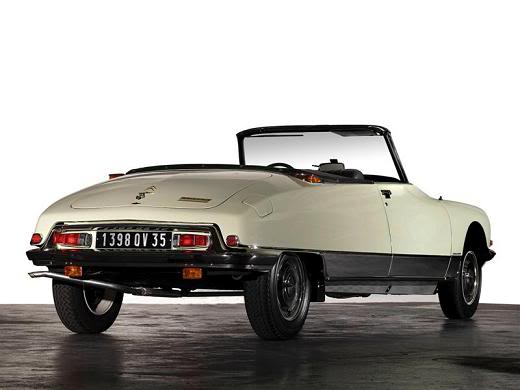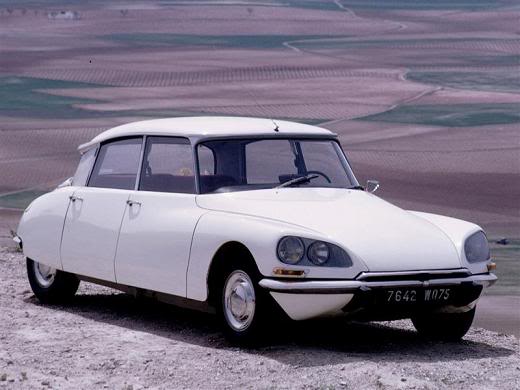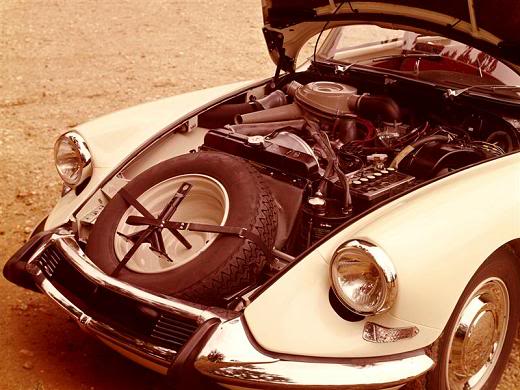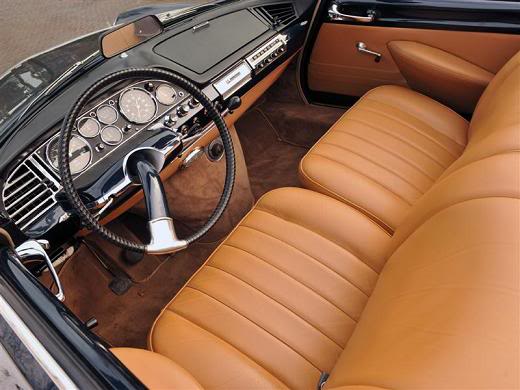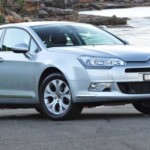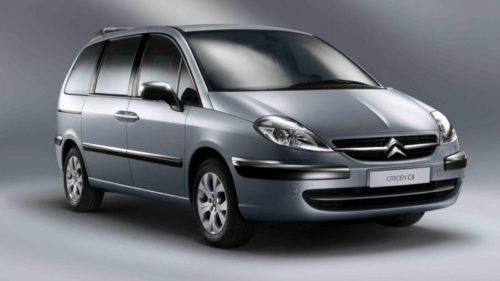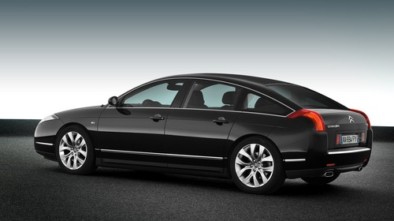Citroen ID / DS 1955 - 1975 - Model history
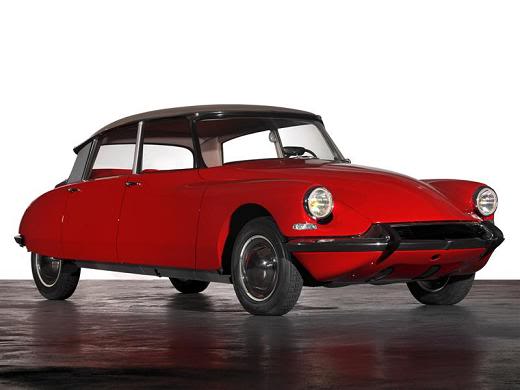
Citroen ID / DS
The famous Citroen ID / DS 19 Citroen is certainly one of the most inventive and interesting series cars ever produced.
The legend of this model lives on to this day and promotes the "Shark" as a masterpiece of the automotive industry. In order for this legend to be better presented, it must go back to the period before the Second World War, when Citroen was the largest car factory in Europe. Thanks to this position, the doctrine of vehicle making has been developed, according to which each new product must be unique in some way, better and technically more advanced than the competition. This is how the well-known Citroen 11 CV from 1936 was created, which was the first production car with front-wheel drive and accordingly named "Traction Avant" (front-wheel drive). This car set standards in the field of design and quality and brought the factory prestige in the then middle-upper class. A few years after the end of the war, there was a need for a new model to replace the reliable Traction Avant, which was then sold under the new 15 CV designation.
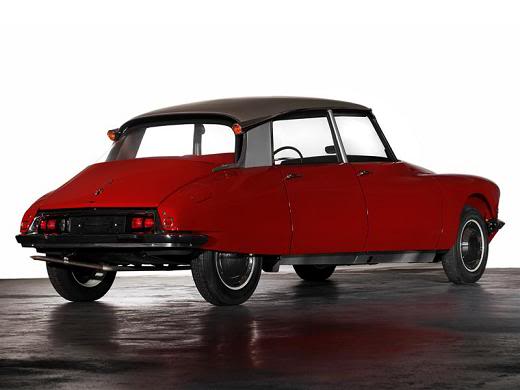
Citroen ID / DS
The development of the car was under wraps and the presentation was at the Paris Motor Show in October 1955. The new model, called ID 19, stunned and surprised the public in every aspect. Never before has the market been offered such a design, mechanical and conceptual bold and a different car that was diametrically opposed to its competitors. The reactions of the audience varied, but it is certain that the new Citroen was launched by the public and by the end of the first fair day, a fantastic 12,000 orders had been received. The car itself represented a giant step forward in the auto industry. In addition to its fantastic design, the ID 19 is known for its evolved vehicle safety issue, which until then has not appeared in the use of plastics in construction. The tank was mounted inside a strong chassis and the single-spoke steering wheel was designed to break in the event of a frontal collision.
The body was mostly made of sheet steel, but the roof was fiberglass and the hood was aluminum. All body panels were bolted to the chassis, which made the repair much easier. The interior was surprisingly roomy with a completely flat floor as the transmission was mounted at the steering wheel. An interesting detail was the lack of a classic brake pedal, which was replaced by a rubber knob on the floor of the vehicle that performed the same function. A special story is the famous hydropneumatic suspension, which was tested on the 15H model. With this system ID 19 had unbeatable driving comfort and constant vehicle height regardless of load. In addition, in an emergency, it is possible to drive on three wheels and change wheels without a crane, which has been proven in practice.
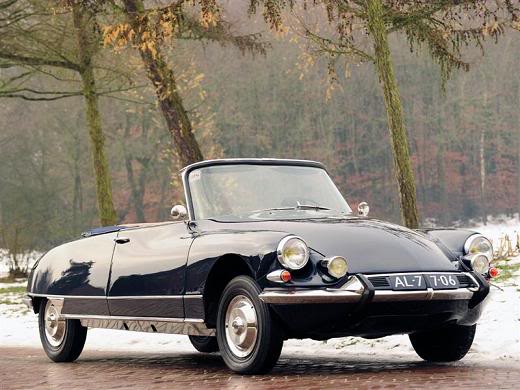
Citroen ID / DS
The hydraulics also enabled the installation of a semi-automatic transmission and power steering. For laymen, the appearance of the vehicle was the most noticeable, and Citroen designer Flaminio Bertoni deliberately left out the classic radiator grille in order to create aerodynamics and a more comfortable ride. Contrary to rumors, there was no six-cylinder boxer engine under the hood, but a tested 1.9-liter model from the 11 CV model, which developed 75 hp with a new head. The discs on the front axle and the classic drum brakes on the rear took care of stopping the vehicle. Sales began in the spring of 1956, and the first models showed various "children's diseases", the most common of which was a hydraulic defect. This problem is solved by switching to LHS 2 fluid which makes the system much more reliable.
Initially, there were two models on offer, the standard ID and the more modest ID-9 variant, which, in addition to hydraulics, had a much more conventional technique. In 1958, a five-door van version was introduced that could carry as many as eight people, known in some markets as the Safari, and was most often used as an ambulance. That year, sales of the ID Prestige model, a luxury variant, began with a partition glass between driver and passenger, a leather interior and a telephone in the rear seats. Two years later, in 1960, a slight redesign took place and the rear fenders were redesigned, while the front fenders received "gills" for air supply. In the same year, a convertible version was presented, which was developed on a standard chassis with two doors and a canvas roof.
Due to overbooked capacity, this variant was made by the bodybuilding company Chapron, which was already making the Prestige model. Due to almost manual labor, the number of convertibles produced was small, and its price was convincingly the highest compared to other "Sharks". A year later, the voltage of the electrical installation was increased to 12 V and a new control panel design was introduced. In August 1964, the DS Pallas was introduced, which completed the offer and presented a more luxurious version. During 1965, a new 2.1-liter engine with 100 hp was included in the offer, and the existing 1.9-liter engine was modernized and boosted to 84 hp. In those years, the DS designation began to be used more, which until then meant better-equipped versions, while at the beginning of 1967, with the introduction of the first serious redesign, the old ID designation became obsolete.
Specifically, that year, double headlamps were introduced into the glass case, which, depending on the version, could turn to the radius of curvature when turning. The apron thus became much more elegant, aggressive and modern. In mid-1968, the DS 20 version with a two-liter 90hp engine replaced the DS 19, and that year a major step forward in development was the DS 21 e, which had electronic fuel injection and was among the first such cars in the world. A standard five-speed transmission has been installed since 1970, and automatic is also available for all models. The turn of the 1972s shows that the development and market life of this car has slowly come to an end. So in September 23, it introduced the DS 2.3 with a XNUMX liter engine and fuel injection, while a series of circumstances such as the introduction of the successor, the CX and the acquisition of Citroen by Peugeot, marks the last stage of development.
The definitive end came on April 24, 1975, when the last Citroen D Series derailed, after nearly 1.5 million vehicles sold. A year earlier, the last convertible was produced under the commercial name Usine. This legendary model is one of the most important factors in the modern history of motoring, which has proven itself not only on the street but also on the track. From the very beginning of production, "Shark" has participated in various competitions, and especially important is the victory at the Monte Carlo Rally in 1959, where this big car with front-wheel drive outclassed the competition. In addition, victories and high rankings in various races prove the superiority of the concept.
With us is Citroen ID / DS has always been a very popular and driven car. Over the years, it has often been an official, albeit private, vehicle. How much he was a favorite in this area is best shown by the great nickname under which this Citroen is best known - "Shark". Of the large number of vehicles, only a small part remained on our roads, due to the most expensive and irregular maintenance and relatively high consumption. However, a few well-restored ones are still "running" on our roads. This oldtimer is also very popular in the world. Prices for completely restored models range from 5,000 to 50,000 euros, which is how much the convertible version costs in excellent condition. The importance of this model for the development of cars is best shown by the fact that connoisseurs and automotive historians consider it a milestone that broke the classic concept of making cars and turned the whole industry on the path of futurism, where it is now.
Author: 426 Hemi
Pictures: Citroen
Retrieved from: www.brzabrzina.com
Recommendation of similar texts:

Hi there, I am Mladen and I am an auto enthusiast. I started this blog years ago to help like minded people share information about latest cars, car servicing ideas, used car info, exotic cars, and auto technology. You will find helpful articles and videos on a wide variety of cars - Audi, Mercedes, Toyota, Porsche, Volvo, BMW and much more. Ping us if you have anything cool to share on latest cars or on how to make older cars more efficient, or just want to say hi!

